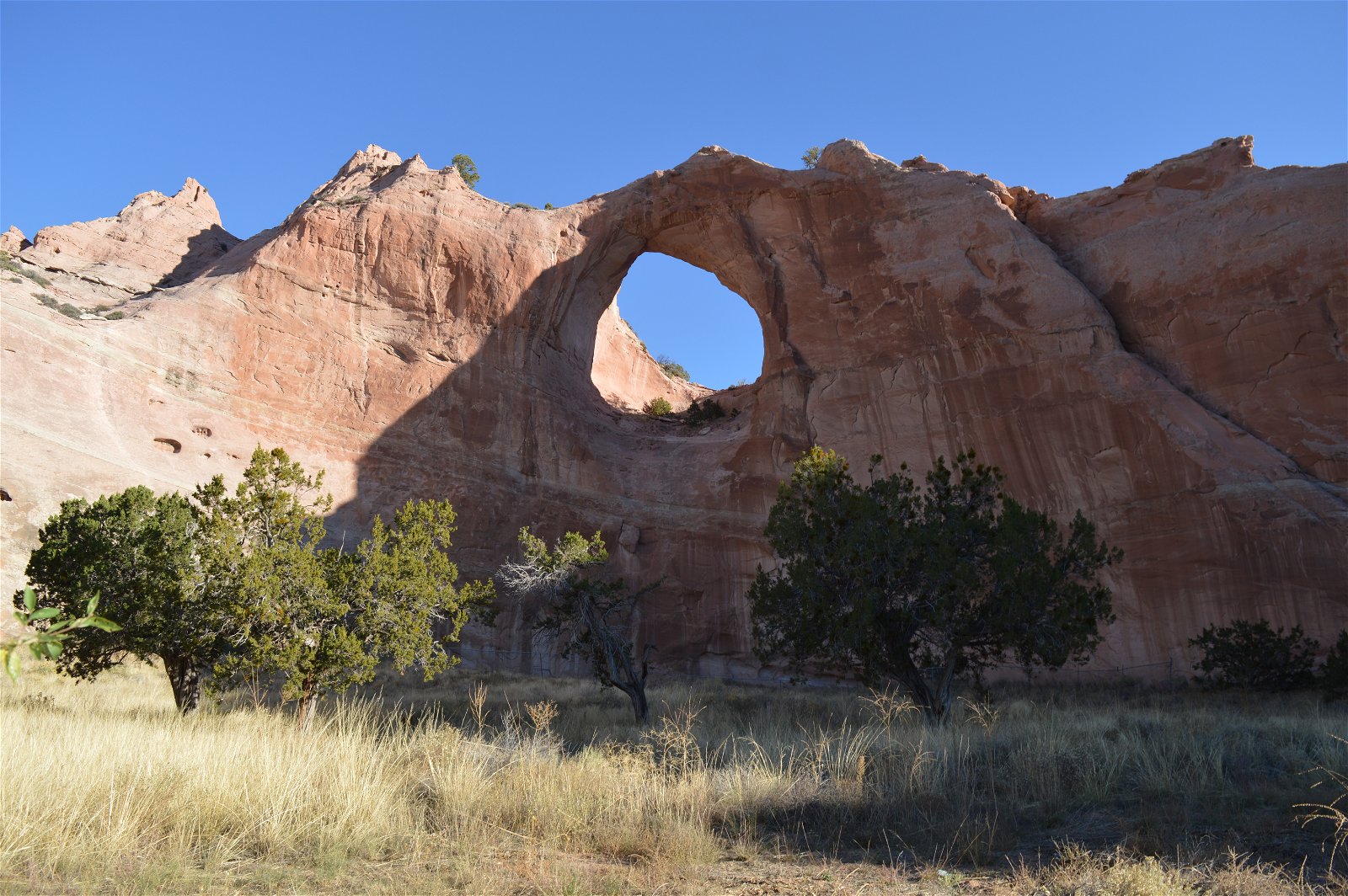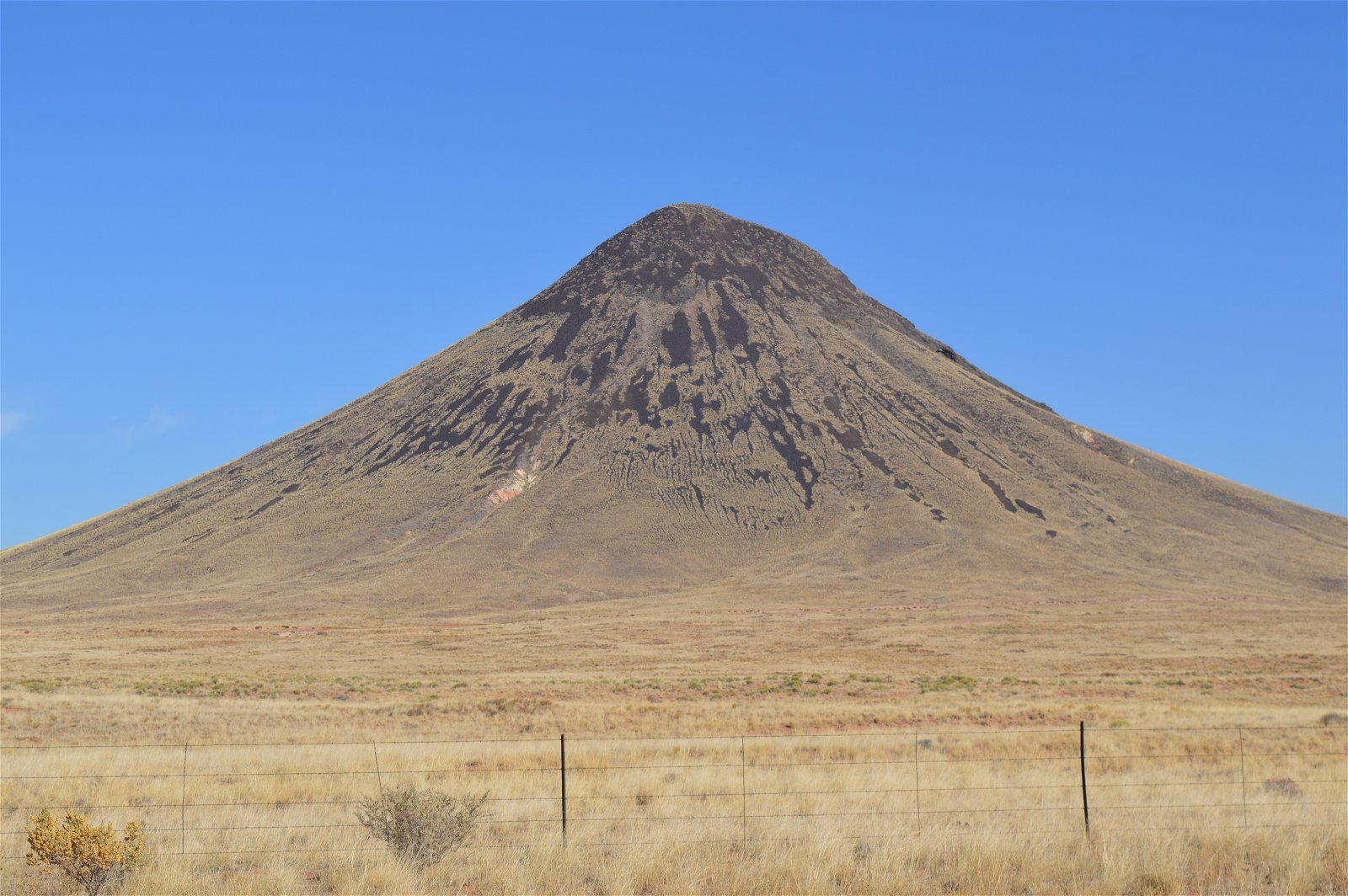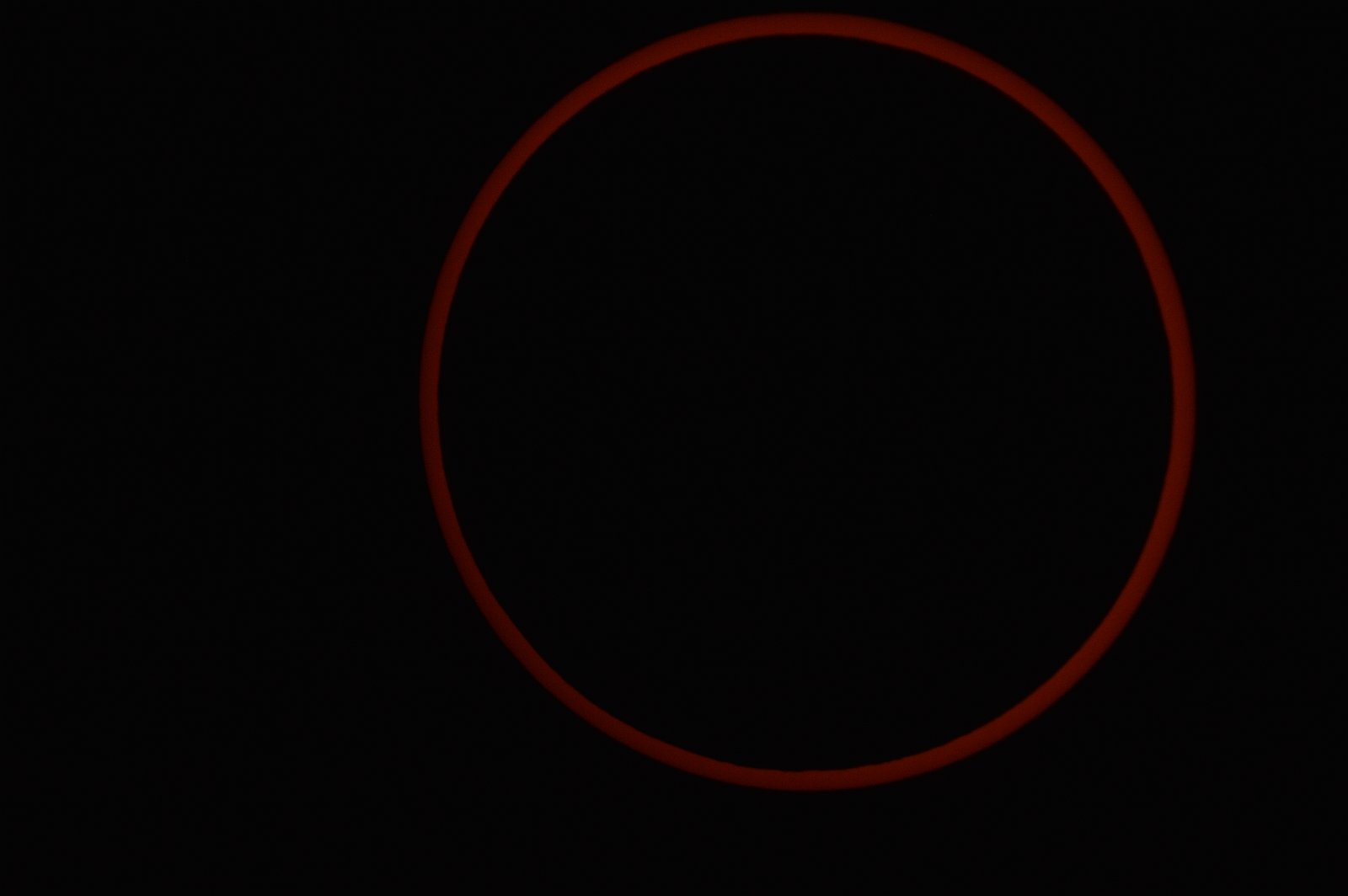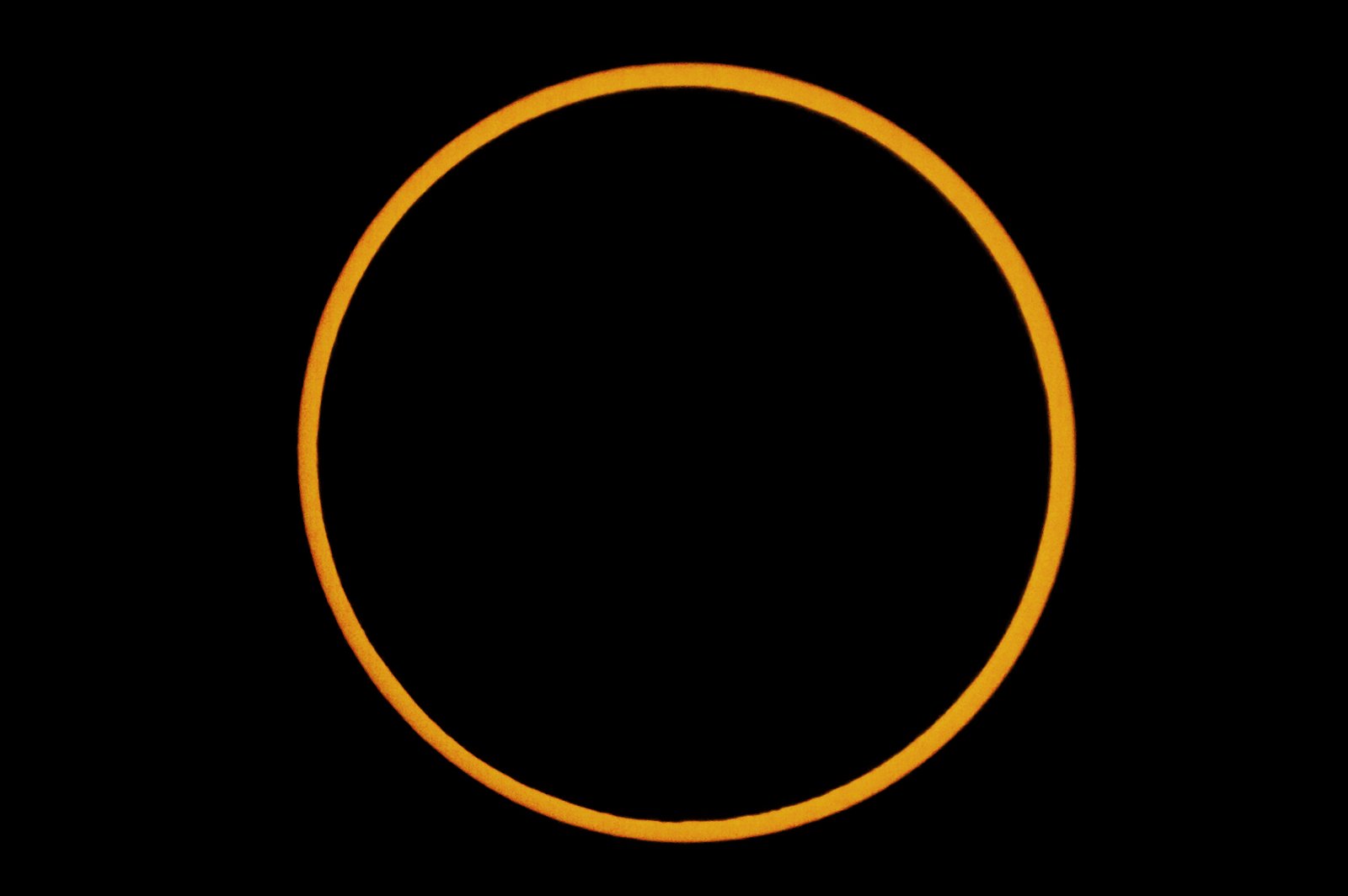A Ringing Success!
Photographing the Annular Eclipse and More!
In May 1984, I saw my first annular solar eclipse. My very good friend (now deceased), Roger St. Peter was there, and he took some photographs with a 35 mm camera with a zoom lens. I had the slides processed, but unfortunately, they were underexposed—one can barely make out a thin ring in otherwise black slides. Such was one of the downsides of using film—one didn’t know what one had captured until much later. With modern electronic cameras, one can instantly see the results and make corrections. For several years, I have been collecting photographs of astronomical objects and events to provide images for use in my articles and books about astronomy and creation. I have some good photographs from the 2017 total solar eclipse, but I didn’t have a good photograph of an annular eclipse. Now, I do.
The Eclipse
In September, I blogged about the October 14, 2023, annular eclipse of the sun, in which I announced my plans to travel to Albuquerque to watch it. It was a very successful trip. The Wednesday evening before the eclipse, I spoke at Providence Bible Presbyterian Church, which hosted an eclipse party the day of the eclipse. My topic was what we were likely to experience during the eclipse. On Saturday, we had well over a hundred people at the eclipse party. It was an outreach for the church, and the church leadership was very pleased with the turnout, as they did not know many of the people who were there. I set up the Questar telescope at one corner of the parking lot near a somewhat busy street. As the eclipse began, people driving by saw what we were doing, and some of them pulled over to ask if they could have some eclipse glasses. Since I had brought 500 pairs of eclipse glasses (a bit more than we needed), we were happy to pass them out. Once the eclipse got underway, I set up a camera taking photos a few times per minute to make a time-lapse video of the people. As expected, the crowd rapidly thinned after annularity, but a few of us remained until the very end of the eclipse.

A hundred people at the eclipse party.
As the eclipse deepened, people noticed how dim the sunlight was and how sharp shadows were getting.
The eclipse began about 9:15 a.m. MT. It was an hour and 15 minutes until annularity. About a half hour before annularity, enough of the sun was blocked that we began to feel cooler. I had been wearing a T-shirt, but, due to the cold, I put a sweatshirt on for more than an hour. As the eclipse deepened, people noticed how dim the sunlight was and how sharp shadows were getting. I drew attention to small eclipse images in the shade of a tree. The gaps in the leaf canopy acted as pinhole cameras to produce images of the eclipse on the pavement, but they showed up best on the seats and backs of two white folding chairs in the parking lot. During annularity, the images transformed from crescent shapes to perfect little circles.

Partial eclipse images on the chairs

Throughout the eclipse, I let people look through the telescope (equipped with a solar filter!). However, I interrupted the viewing from time to time to take photographs of the eclipse with my Nikon D3200 camera attached to the special port on the telescope. There is a technique for taking good solar photographs. If one matches the brightness and color of the sun in the photographs to the visual appearance of the sun, the sun’s photosphere is saturated, and the excess response bleeds into sunspots, spoiling their delicate structure. To avoid this, one must intentionally underexpose the images and then bring up the brightness and restore the proper color later. I always ask my friend, Jim Bonser, to do this in Photoshop, and he kindly did so again (Jim is one of the amateur astronomers whose photographs are in my book, The Heavens: A Different View).
During the few minutes of annularity, I let people look through the telescope, but I interrupted this near the middle of annularity to capture a few photographs. That was my main objective of this eclipse trip. I’m showing here the original underexposed photograph and the photograph that Jim produced by brightening, correcting the color, and recentering. It is so perfect, some people have accused me (jokingly, I think) of simply drawing a yellow circle on a black background. I selected 16 photographs spanning the entire eclipse that Jim cleaned up for me that I put into a time-lapse sequence.
Also While in New Mexico
The morning after I arrived in Albuquerque, I woke up very early (no surprise), so I took the long drive down to White Sands National Park. I had seen it from an airliner at 35,000 feet once, so it was good to see it up close. I had about two hours there, which allowed me time to drive completely through the park and take all the hikes that most tourists take. The one hike I omitted was the five-mile hike out to the large lake bed. I had neither the time nor the water.

White Sands
On the way back to Albuquerque, I ate a late lunch at an A&W root beer place. I hadn’t been in an A&W in decades. I was curious how the root beer might taste. In recent years, I haven’t been happy with the taste of root beer, both A&W and other brands that are found in stores. It seemed very different from the taste I grew up with. I wondered if the difference in taste was due to the use of corn syrup rather than cane sugar. While I was in the restaurant, I learned that they make the root beer fresh, and they use cane sugar. With one sip, I was delighted to find that the root beer was just as good as I remember more than a half century ago when my family would go to the A&W root beer stand in Fairborn, Ohio. I guess that I’m a root beer snob now.
After lunch, I went to the Albuquerque airport to pick up my wife, Lynette. Of course, she came out for the eclipse, but two days after the eclipse was her birthday, and I wanted to celebrate it with her. I took that day off and took Lynette shopping and lunch at a restaurant. Kathy Peterson, our hostess in Albuquerque, baked a cake for Lynette. It was delicious.
The day after the eclipse, I spoke in Sunday school at Providence Bible Presbyterian Church. On Tuesday evening, I spoke to the Creation Science Fellowship of New Mexico.
On to Arizona
The next morning, I dropped my wife off at the Albuquerque airport to fly home, and then I drove on to Flagstaff. On the way, I took a detour to visit Window Rock. As many of you probably know, I like arches, so I thought it important to visit this beautiful arch. This is on Navajo land, and the capital of the Navajo nation is at Window Rock. There also is a museum of the Navajo code talkers there too. The entire campus is quite impressive. I recommend that if you are passing by on Interstate 40 that you take the time to pay a visit. Rather than return to I-40, I thought it best to drive more directly to Flagstaff. This took me through the Navajo Reservation on two lane roads, where I saw some beautiful landscape, including some volcanoes.

Window Rock

Volcanoes
The reason I went to Flagstaff was that Adam Huff, who used to work for Answers in Genesis but now works for Canyon Ministries, asked me to pay a visit. Answers in Genesis teams with Canyon Ministries to offer our Grand Canyon raft trips. But Canyon Ministries does far more—they offer rim tours of Grand Canyon, as well as hiking and backpacking trips in the canyon and other locations nearby. Adam’s church, Calvary Bible Church, is beginning a new ministry called EDGE (Exploring and Discovering God’s Earth). On my raft trip in June, Adam asked me to come out and do two star parties as the first event for EDGE. We had nearly 50 people present on both of the nights. The programs began around sunset with a Q&A session. Once the sky got dark enough, I showed people the moon, Saturn, Jupiter, the Andromeda galaxy, and the binary star Albireo through the telescope. I also pointed out constellations and stars with a green laser. The skies were perfect, and we all had a good time.

Old Caves Crater Arch
On my final day in Flagstaff, I climbed Old Caves Crater, a small volcano near where I stayed. The name comes from several openings that resemble caves in the basalt near the summit of the volcano. Two of the “caves” were connected, producing an arch. I was thrilled! I don’t yet know if anyone has made note of this arch. I have mixed feelings about reporting it. A few years ago, Kentucky overtook Arizona as the state with the second greatest number of arches (Utah is number one). I’m not comfortable helping Arizona out in possibly edging out Kentucky and reclaiming the number two spot.
On to Las Vegas
No, it’s not what you think—I don’t get gambling. I mean, I don’t understand the attraction gambling has for people. My Grand Canyon raft trips start and end in Las Vegas, so I’ve been there many times, and I’ve often walked around in casinos—ain’t nothing going to happen. Nor do the entertainment venues there appeal to me.
So, why did I go to Las Vegas? It was the venue of Flatoberfest, a two-day flat-earth meeting. I have been researching the flat-earth movement since 2016. As part of my research, in 2017, 2018, and 2019, I attended the Flat Earth International Conferences, but those were discontinued after 2019. Shortly thereafter, Flatoberfest began to be held in South Carolina, but I didn’t attend any of those. With a change in location and lineup of speakers, I thought that I would give this meeting a try. Perhaps I’ll discuss this meeting in another blog.
After Flatoberfest, I drove back to Phoenix, where I had flown to 12 days earlier and rented a car. I spent the afternoon at the Creation Research Society (on whose board I serve) headquarters in Glendale. I took care of a little society business as well as some Answers in Genesis business before catching a red-eye flight home that evening. I had put 2,000 miles on the rental car, but it was well worth it.

Answers in Genesis is an apologetics ministry, dedicated to helping Christians defend their faith and proclaim the good news of Jesus Christ.
- Customer Service 800.778.3390
- Available Monday–Friday | 9 AM–5 PM ET
- © 2026 Answers in Genesis



